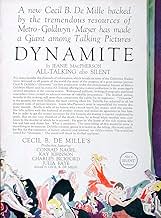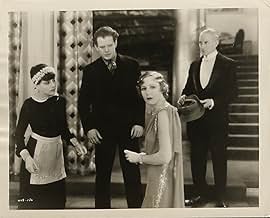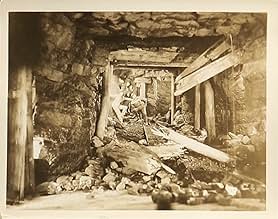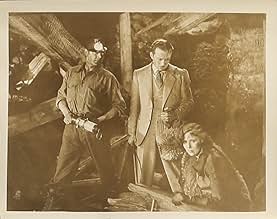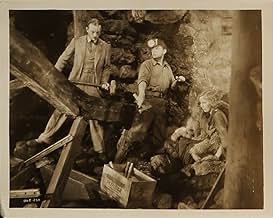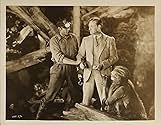अपनी भाषा में प्लॉट जोड़ेंWealthy Cynthia is in love with not-so-wealthy Roger, who is married to Marcia. The threesome is terribly modern about the situation, and Marcia will gladly divorce Roger if Cynthia agrees t... सभी पढ़ेंWealthy Cynthia is in love with not-so-wealthy Roger, who is married to Marcia. The threesome is terribly modern about the situation, and Marcia will gladly divorce Roger if Cynthia agrees to a financial settlement. But Cynthia's wealth is in jeopardy because her trust fund will ... सभी पढ़ेंWealthy Cynthia is in love with not-so-wealthy Roger, who is married to Marcia. The threesome is terribly modern about the situation, and Marcia will gladly divorce Roger if Cynthia agrees to a financial settlement. But Cynthia's wealth is in jeopardy because her trust fund will expire if she is not married by a certain date. To satisfy that condition, Cynthia arrange... सभी पढ़ें
- 1 ऑस्कर के लिए नामांकित
- 1 जीत और कुल 1 नामांकन
- Bobby
- (as Douglas Frazer Scott)
- Good Mixer
- (बिना क्रेडिट के)
- Mine Foreman
- (बिना क्रेडिट के)
फ़ीचर्ड समीक्षाएं
Maybe because of his pompous and pretentious vats of nauseating drivel such as SIGN OF THE CROSS, I instinctively avoid the self-professed great man's movies. But his excellent FOUR FRIGHTENED PEOPLE and MADAM SATAN tempted me to give this ago. So glad I did - it's fantastic, honestly it's a million times better than I was expecting.
There's exceptions of course but I'd normally expect a 1929 talkie to be terrible. Early talkies are generally static and stagey with theatrical actors taking it in turns to enunciate their lines very, very slowly huddled around a hidden microphone. This displays absolutely none of those tell-tale traits. You'll not believe it's De Millie's first talkie! It's so dynamic and as far removed from a studio bound film as you can imagine. Clearly hours and hours of preparation went into this to get it just perfect. Like much more modern films, the camera doesn't simply point at whichever character is speaking. You get cut-always to bystanders showing and hearing their reactions. It's a proper film, not a filmed stage play.
These are people from the 1920s, real people from 1929 so don't expect them to be like us (which is part of the appeal of watching old pictures) but nevertheless the acting in this is natural with characters speaking normally and as in Mamoulian's APPLAUSE, sound is employed virtually another character. An example of that is the portentous beating of the hammer making 'Derk's' scaffold as he's waiting on death row which ominously returns in the dramatic climax.
This is not typical 1929 acting. You're drawn into believing that you're not watching actors but somehow glimpsing into the lives of real people. I've never really rated Charles Bickford before but under a skilful director he's a revelation. A pretty odd sort of guy but one who captivates your attention.
Being as I am, Mr Shallow, my inclination is to watch films with sexy ladies like Joan Blondell or Alice White so I wouldn't normally go out of my way to watch Kay Johnson but like with Charles Bickford she's thoroughly outstanding here. She's a sort of less sexy version of Norma Shearer but in my opinion a more modern and naturalistic actress - dare I say a better actress? I've already enjoyed her performance in MADAM SATAN but now that I've unexpectedly become a fan, I'm going to search out the rest of her work.
A great director, excellent acting and exceptionally high MGM production values make the maddest, silliest story into something quite amazing. Sorry Cecil for doubting you for all these years!
Being made in 1929 we even get the extended roaring of Leo the lion at the start.
Ordinarily I'm not that huge a fan of DeMille, but I found his first foray into sound, "Dynamite", a very good and innovative film. The actors don't speechify endlessly, the camera moves, and the story moves with it. Unlike many films from 1929 it's worth a repeat viewing for the entertainment value, not just the novelty of seeing an industry in transition.
That doesn't mean that there isn't plenty of an industry in transition on exhibit, but rather than inane musical numbers, De Mille uses sound appropriately and also employs largely unknown actors from the stage to keep the emphasis on the plot and in particular, the relationships. From the hammering of the builders of Hagan Dirk's gallows and the singing of "How Am I to Know" by a fellow death row prisoner played by Russ Columbo during the wedding scene, to the strange aero wheel race at the country club, to the playing of a particular song on the radio introducing a romantic moment, this film was an innovative technological marvel when it was first released. However, technological marvels fade with time, and what you do remember are relationships that hit home and are memorable. Many have already stated the outrageous premise of the plot. What is not outrageous and rings true after almost 85 years is how you don't get to pick who you love - it just happens and it can often be most inconvenient, and how heroes can be found in the strangest places and in people you would not think would be up to the task.
I'd recommend this one highly and not just to early talkie enthusiasts.
*** (out of 4)
Cecil B. DeMille's first talkie was the first of three pictures that the legendary director would make at MGM. The filthy rich Cynthia (Kay Johnson) needs to be married on her birthday or else she'll lose millions from her grandfather's will. The only problem is that her boyfriend (Conrad Nagel) is already married to a woman who doesn't mind her husband dating Cynthia but she refuses to marry him unless the money is right. On the other side of the tracks, convicted killer Hagon (Charles Bickford) is about to be put to death and offers his body for $10,000 so that his kid sister will be taken care of. Cynthia decides to marry the death row inmate so that she can be "married" on her birthday and since she'll be a widow soon after she can get back to her normal life. The only problem is that after the marriage the real killer comes forward and Hagon is set free.
Is that enough plot for you? DYNAMITE features enough plots for about ten different movies and everything I wrote above is just the opening forty-minutes and that leaves eighty-seven more minutes of craziness. This is without question an incredibly bizarre film but there's no question that it's highly entertaining on so many levels. One such level is that it's just downright nuts from start to finish and I just sat there watching it in a complete amazement that anyone could actually pull it off. DeMille proves what a genius he was by taking this outrageous stories and making them work. If any other director had tried this we'd laugh them right out of the theater. I'm not sure what DeMille's secrets were but he makes us care about the characters and their fate. It also doesn't hurt that we're given some excellent performances with Bickford leading the way as the tough coal miner. This is the type of role he could play in his sleep and he pulls it off wonderfully. Johnson is very believable and good in her part as is Nagel. Julia Faye plays his wife and we get supporting performances from Joel McCrea and William Holden.
DYNAMITE features some very campy moments including the scene where the killer confesses to the crime. I dare you not to laugh during this sequence. I also found it rather hilarious how casual the wife, her husband and the lover were at hanging out with each other. I think this threesome relationship is something that even Jerry Springer would roll his eyes at. Still, this is so entertaining that it really doesn't matter and it would make a great double feature with DeMille's other 1929 film, THE GODLESS GIRL.
The in-between-the-lines context of this movie is also remarkable. Recall that Prohibition of alcoholic beverages had been in effect as a federal mandate for nearly ten years, and that many States had been "dry" with Prohibition for longer than that. But "the glittering society" depicted in this movie was positively soaking in booze. Clearly this movie was written and filmed well before the banking crisis of 1928-29 turned into the bank failures and bank runs of the early 1930s. The pace of the language, the styles, the ways of talking and relating expressed in "Dynamite" show the viewer -- now seventy-five years later -- that the Roaring '20s were very frenetic, indeed.
Prohibition was something for the small towns and rural areas, or so it was said, then. It came into being because activist female leaders made their case that drunken behavior and alcoholism were twin punishments on women and on their children. The majority of bad and abusive drunks in that era, 1880 to 1920, were men, of course. The ones who suffered from their abusive behaviors were their women and their children, or others in their families.
This is a movie which is all about women and men. The lead character, Buddy Derks, is about to be executed for a murder he didn't commit. In a drunken carouse, the young man who committed the murder assaults his drinking buddy with a knife, and this fellow in his turn shoots his friend, fatally wounding him. Before he dies, on the floor of the swank club where they're drinking, he confesses to the murder which Derks has been saddled with. Justice is swift, surprisingly so, and Derks is suddenly released from death row.
He goes then to confront the society 'dame' who paid him $10,000 to marry her, in a jail cell ceremony. The why and wherefore of this marriage of convenience are really extraordinary and that twist makes the movie worth seeing, alone. But suddenly the "dame" has a husband that she really does not want, and that's where the fun begins ....
Bickford is amazing in this movie. He clearly overacts, but it seems somehow so natural for him to do so. Everybody in this moving is either dancing or roaring, it seems, so now we know something about how the Roaring '20s roared !
This "Dynamite" is pure dynamite. TCM has done film buffs a great service by showing it all, and there's every reason to petition them to show it again and again, and not just in the middle of the blooming night !! This movie earned an * 8 * for my vote and I would have given it higher marks if the sound track was made more clear, all the way through. As it stands, it is a unique and appealing cinematic treat.
I recommend it most highly and without mental reservations.
क्या आपको पता है
- ट्रिवियाCarole Lombard was replaced during filming, but can still be seen in the released print.
- भाव
Hagon Derk: Ahhhh... bull!
- क्रेज़ी क्रेडिटFilm Title is shown as the word DYNAMITE written on a box of..... dynamite, after being set down by a worker.
- इसके अलावा अन्य वर्जनMGM also released this as a silent movie.
- कनेक्शनEdited into Histoire(s) du cinéma: Fatale beauté (1994)
- साउंडट्रैकHow Am I to Know
(1929) (uncredited)
Music by Jack King
Lyrics by Dorothy Parker
Played on guitar and sung by Russ Columbo in prison
Played on radio and hummed and sung by Kay Johnson
Played on piano as background music and played at the end
टॉप पसंद
विवरण
- चलने की अवधि2 घंटे 9 मिनट
- रंग
इस पेज में योगदान दें


